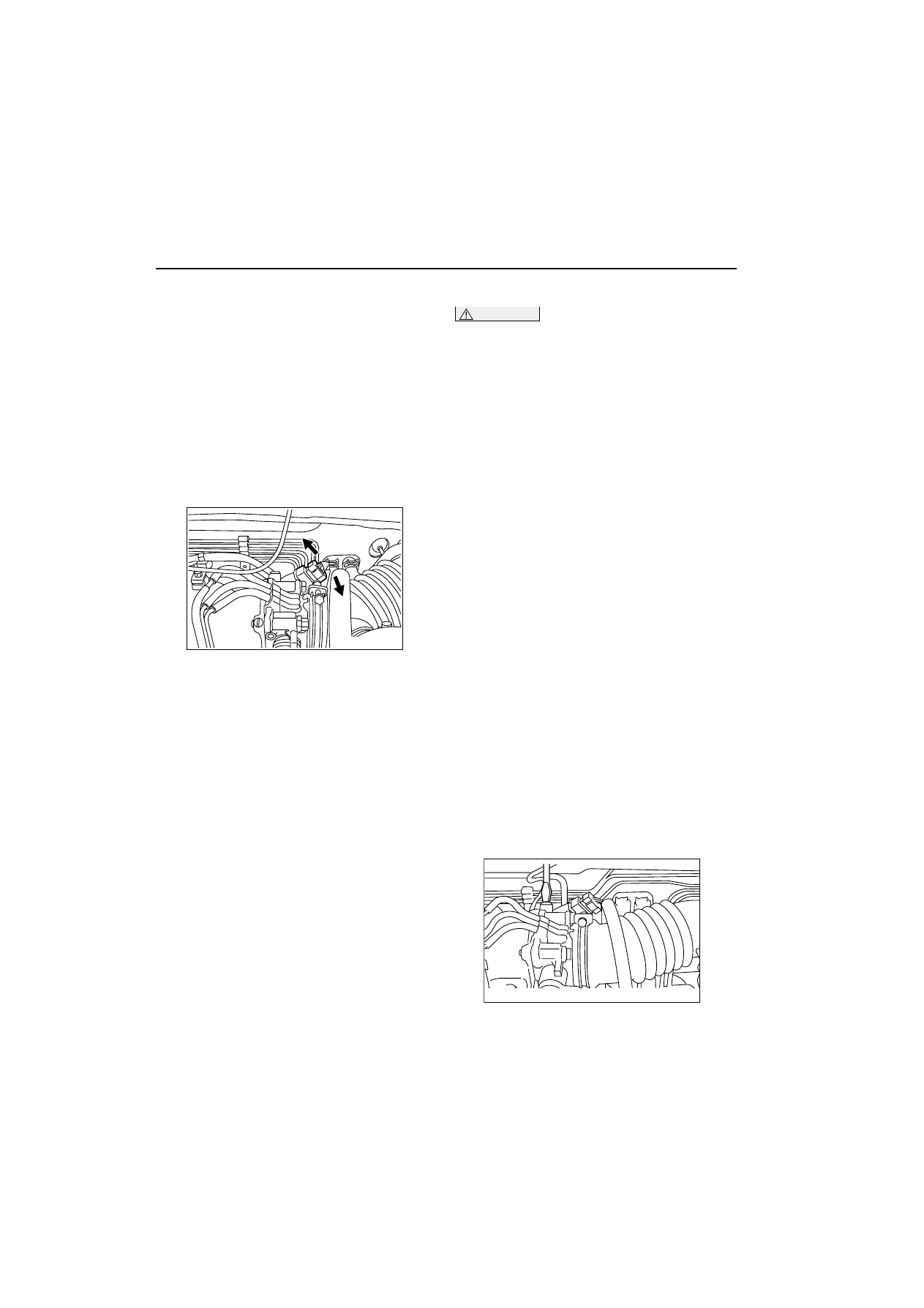Mitsubishi Outlander (2003+). Manual - part 111

ON-VEHICLE SERVICE
MULTIPORT FUEL INJECTION (MFI)
13A-307
(1) Disconnect the throttle position sensor
connector and connect the special tool Test
harness (MB991536) between the
disconnected connector taking care not to
confuse the terminal to be connected.
(2) Connect digital voltmeter between the terminal
No. 2 (special tool’s yellow clip on the sensor
output) and the terminal No. 4 (special tool’s
red clip on the sensor earth) of the throttle
position sensor connector.
2. Turn the ignition switch to "ON" position (but do
not start the engine).
3. Check the output voltage of the throttle position
sensor.
Standard value: 535
-
735 mV
4. If not within the standard value, loosen the throttle
position sensor mounting bolts. Then rotate the
sensor body to adjust.
5. Turn the ignition switch to "LOCK" (OFF) position.
6. Remove the MUT-II. If the MUT-II is not used,
remove the special tool, and then connect the
throttle position sensor connector.
7. If a diagnosis code is displayed, erase the
diagnosis code by using the MUT-II or disconnect
the negative battery cable from the battery
terminal and then leave it for at least 10 seconds.
After that, reconnect the battery cable, and then
let the engine run at idle for approximately 10
minutes.
BASIC IDLE SPEED ADJUSTMENT
M1131001800468
CAUTION
The standard idling speed has been adjusted
by the speed adjusting screw (SAS) by the
manufacturer, and there should usually be no
need for readjustment.
If the adjustment has been changed by mis-
take, the idle speed may become too high or
the idle speed may drop too low when loads
from components such as the A/C are placed
on the engine. If this occurs, adjust by the fol-
lowing procedure.
The adjustment, if made, should be made
after first confirming that the spark plugs, the
injectors, the idle speed control servo, the
compression pressure, etc., are all normal.
1. Before inspection and adjustment, set the vehicle
to the pre-inspection condition.
2. Connect the MUT-II to the diagnosis connector
(16-pin).
NOTE: When the MUT-II is connected, the diag-
nosis control terminal should be earthed.
3. Start the engine and run at idle.
4. Select the item No. 30 of the MUT-II Actuator test.
NOTE: This holds the ISC servo at the basic step
to adjust the basic idle speed.
5. Check the idle speed.
Standard value: 700
50 r/min
NOTE:
.
The engine speed may be 20 to 100 r/min
lower than indicated above for a new vehicle
[driven approximately 500 km or less], but no
adjustment is necessary.
If the engine stalls or the engine speed is low
even though the vehicle has been driven
approximately 500 km or more, it is probable
that deposits are adhered to the throttle valve,
so clean it (Refer to
6. If not within the standard value range, turn the
speed adjusting screw (SAS) to make the
necessary adjustment.
AK300347AB
AK300348